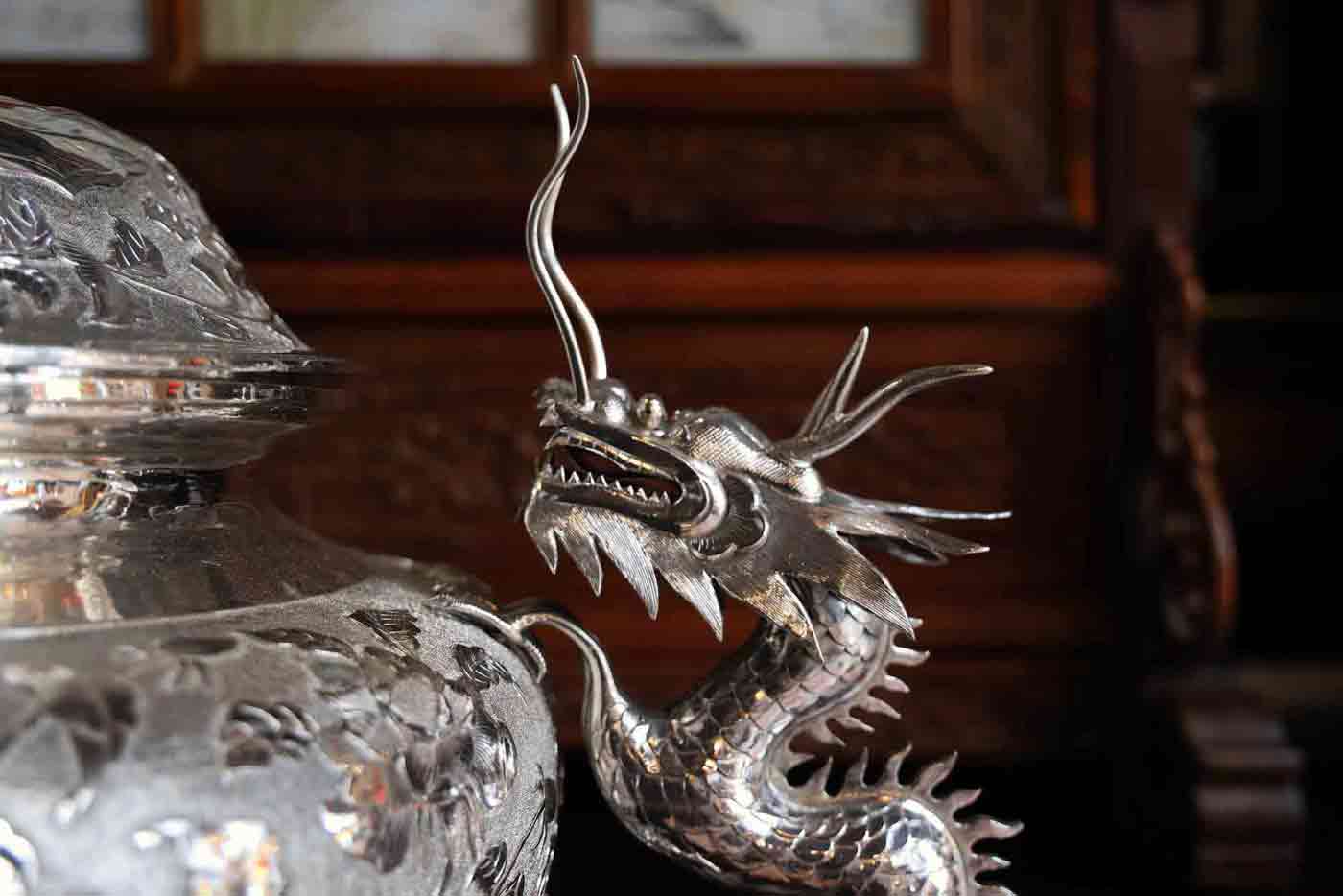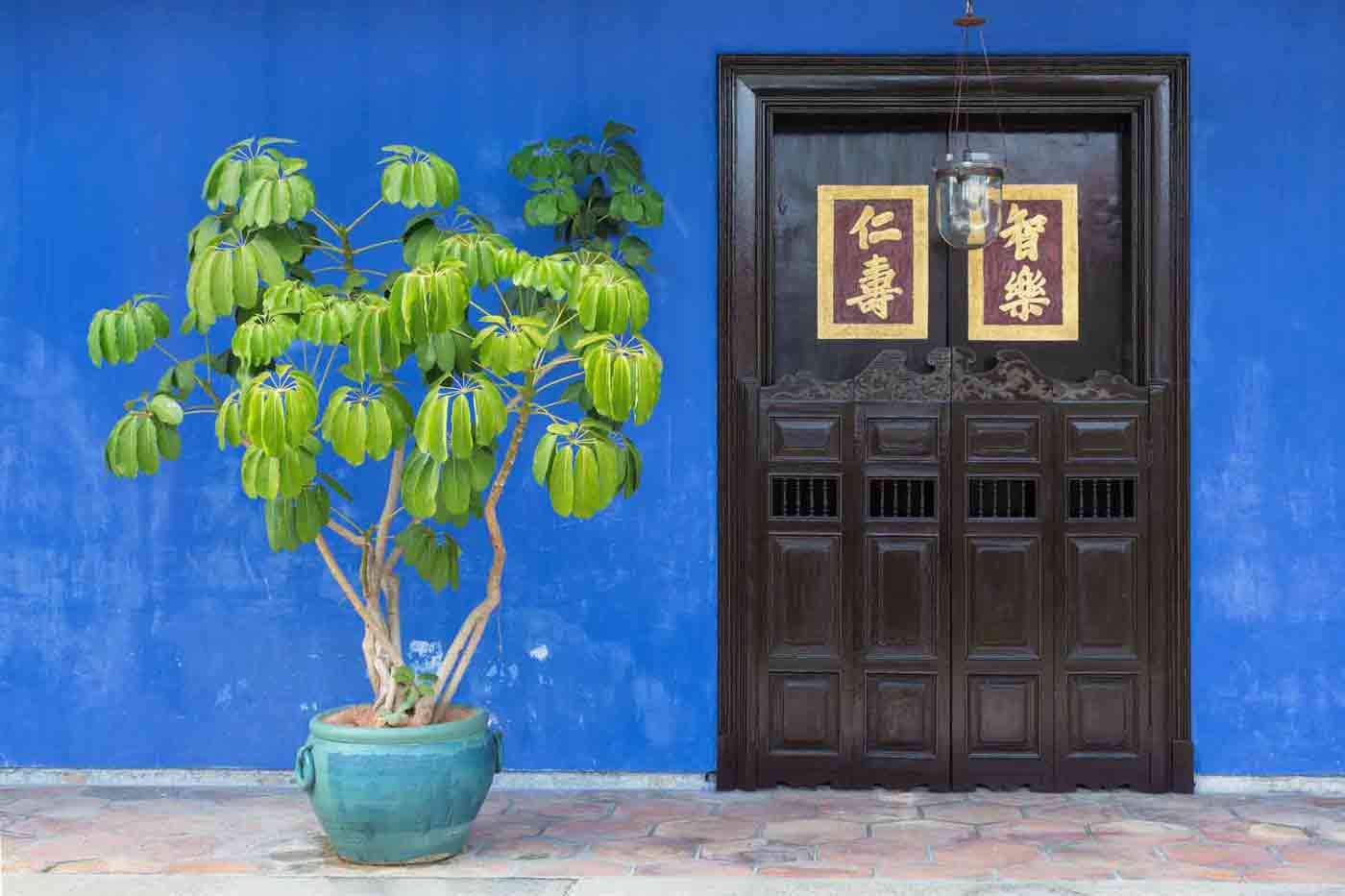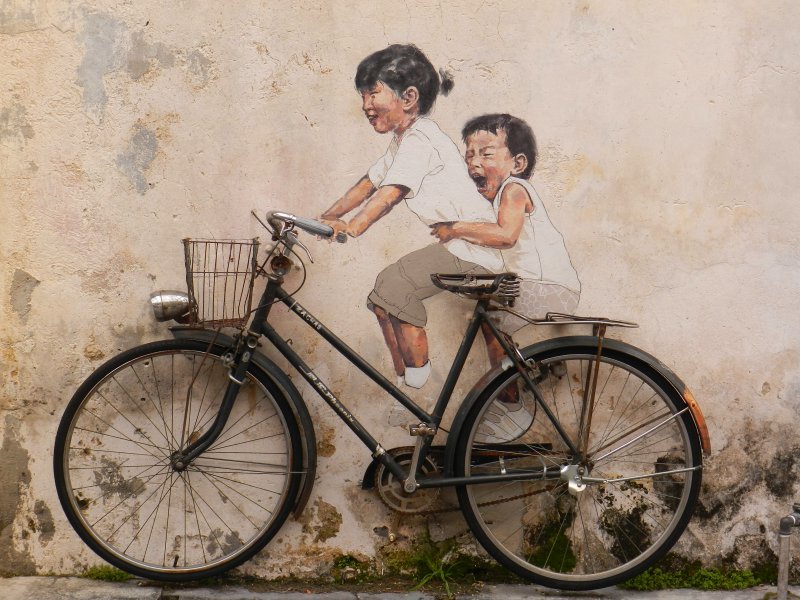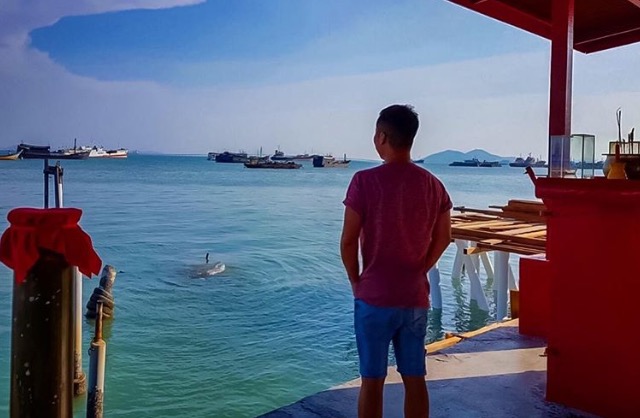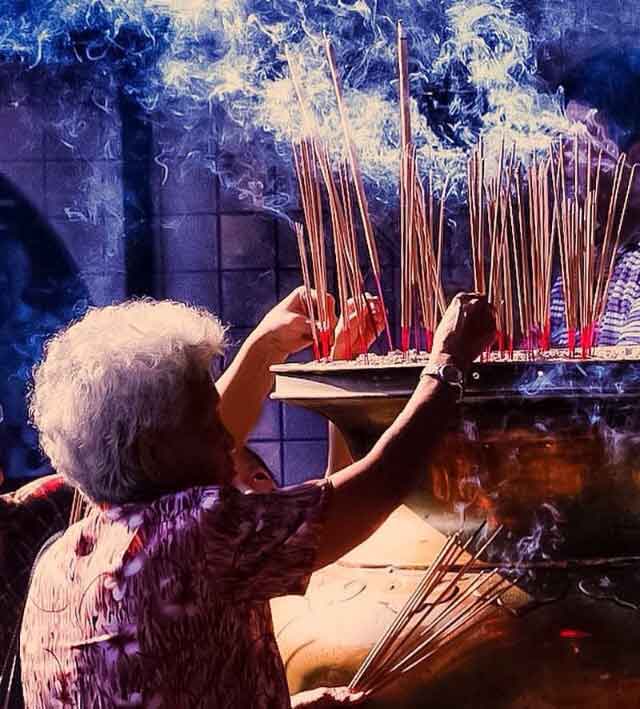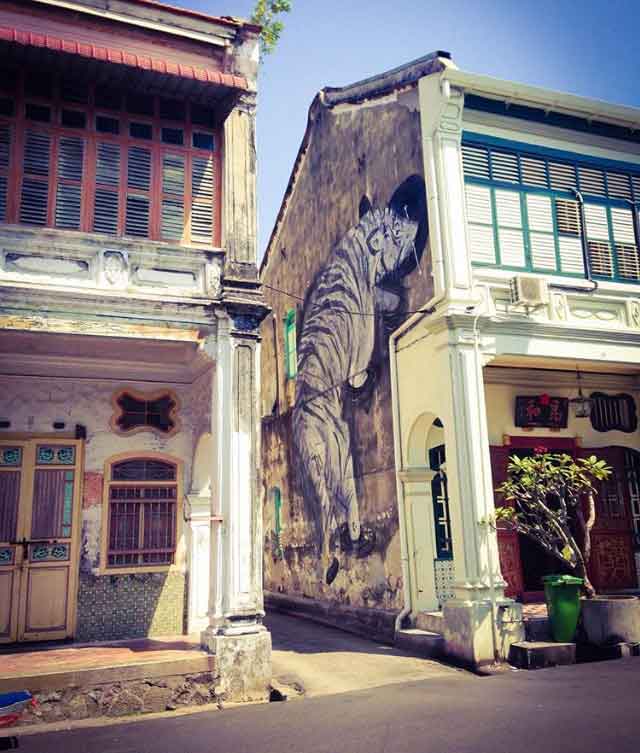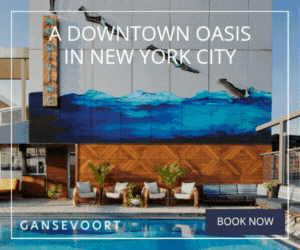Uwern Jong tells the story of his family’s immigration to Penang and why he feels firmly rooted in its heritage.
All the best stories involve intrigue – and my own certainly does – worthy of the Chinese TV period dramas that my grandmother was glued to. I have very fond memories of sitting next to her, pretending to watch these soaps as fervently as she did, but without truly understanding the fascination with such tales of Chinese traders and their ever conspiratorial wives. As a grown-up, I learnt that my own family’s heritage was just as tempestuous; that it was just one of the many likewise stories of Chinese migrants that came to this once British colonial, now Malaysian, island.
My tale starts with my great-grandfather, his name was Heng. He was born in Southern China, in the district of Taishan, Guandong. Formerly British-run Canton, this was the springboard for millions of Chinese economic and war-struck migrants in the 19th century to venture out into the British colonies.
His parents were industrious ‘agriculturati’, owning swathes of farmland. As it was back in the day, Heng was betrothed from birth – his father and a friend had made a pact that they would someday be family and that their first male and female offspring respectively, were to marry. In the first Sino-Japanese war of the late 1800s, Heng was recruited as an apprentice by a British engineer, to assist him in the then lucrative trade of coconut milling in British-occupied Burma. Being the entrepreneurial young man that he was, and having heard tales of great riches to be made in the new world, he took up the offer against the wishes of his family. While in Burma, he fell in love with a young, but widowed seamstress, Nooi Sen, of another Chinese clan. As she had been married once, they weren’t allowed to wed, but still they lived together in Rangoon as man and wife. When Penang exploded as a strategic British port at the turn of the century, he like many other ambitious Chinese migrants decided to move his new, young family south to the island.

This story first appeared in The Modern Manila Issue, available in print and digital.
Subscribe today or purchase a back copy via our online shop.
Penang has attracted global interest since the 1400s, when the Chinese cartographer Admiral Cheng Ho, on his great voyage, mapped out “Ping-lang-yu”, the island of the betel nut. The name stuck and until this day in the Malay language, it is known as “Pulau Pinang”, a literal translation. Originally part of a long-established Malay sultanate, Penang was ceded to the British East India Company, made a free port and renamed “Prince of Wales Island” in 1786 in exchange for military protection from the marauding Siamese. Penang’s location at the Northern opening of the Straits of Malacca made it a perfect natural harbour and gave the British dominance in the area (as they also held Singapore at the Southern opening) over their fiercely competitive Dutch trading company counterparts. In the ultimate move to Anglicise the island, its capital was crowned George Town, after the then sovereign King George III.
Meanwhile – back in China – Heng’s originally betrothed bride, Song Hoaw, had turned 18. Word had spread of his growing success in business, and he was pressurised to return to China to honour the marriage pact, by his clan elders at the Taishan clan house in Penang. Clan houses are among some of the most opulent and beautiful buildings you’ll see in George Town today. They once housed, and in some cases still house the headquarters of co-op societies where members of the same Chinese clan could network, run trade and seek success together. They also acted as investment banks for the rich, loan-sharks for the poor, temples for the devout and gambling dens and opium houses for those far less religious. Most importantly, the clan house was the crucial link that migrants had with their families and friends back in China and the all-powerful elders had a lot of clout and influence when it came to the ‘integrity’ of its members. The British also actively encouraged this clan-brotherhood, as a form of societal control and centre for tax collection.
“Penang’s location at the Northern opening of the Straits of Malacca made it a perfect natural harbour and gave the British dominance in the area.”
Considering himself happily married, he refused to return to China; but in an act to save the family’s face, his enraged father ordered a ritual marriage to be carried out in the village, with Heng being represented by a cockerel. Song Hoaw ceremoniously became part of the clan and lived with Heng’s family on their land. Before long, she started to get friendly with a farm-hand and the family started to panic – back then under Chinese law, convicted adulteresses were sentenced to drowning and the family land would be seized by the government for ‘gross family misconduct’. This news quickly reached the clan house and Heng had no choice but to return to China and bring the wife he’d not seen since childhood, to Penang. To some degree, he had his cake and ate it too – polygamy and having many sons to ensure the future of the clan was considered a status symbol in Penang high society and raised his status in the clan. And before Song Hoaw left China, in a feat of ultimate intrigue, she adopted a young boy from the village as her own, having heard that my great-grandmother, Nooi Sen had already bore a son and heir.
Penang was becoming overcrowded with migrants from all over the world – so the British started capping newcomers. Heng officially married his new bride in Canton to gain her British papers to enter to the island, but at the same time, singlehandedly usurped my Nooi Sen’s position in the household and the eyes of the law – rendering her a concubine with a low status in society. Song Hoaw was instantly promoted in stature and together with her ‘son’, the now heir, ruled the family home. She also gained the support of her clan elders – she was, after all, one of ‘them’ and in their eyes, kept the clan pure.
Clan purity was important in the complex hierarchical system of the day. The Chinese had been in Penang for over a century now and the new generations – Straits-born people known as “Baba-Nyonya” – had started to intermix and showed far less loyalty to their clans. In fact, they adopted a very unique, local way of living – and even their own vernacular, dress, culture and cuisine became a hodgepodge of Chinese, Malay and other global cultures present on the multicultural island at the time.
Respite for the clan houses came in the form of the “Sin Kheh”, literally meaning ‘new guests’ – the fresh-off-the-boat Chinese migrants – speaking only the clan dialect, they were dependent on their community and most importantly, fiercely loyal. For the most part, they would arrive in Penang penniless and hungry and end up at a jetty owned by the clan, where they would disembark from boats launched from the bigger ships in port. Here, they would be processed, housed (tax-free as the jetty was technically not on land) and slowly find their way inland, with loans from the clan house. Many of the clan jetties have today become victims of land reclamation, but a handful survive and hold great historical significance for today’s descendants.
“Penang provides a step back into a past that has disappeared from many other cities of the same DNA – Singapore, Yangon, Shanghai even.”
To bring my family history lecture to a tragic close, suffice to say it was not a happy, coexisting household. My great-grandmother and her six children, including my grandfather were banished from the generous family ‘shop-house’ in George Town’s Muntri Street to a life of poverty just around the corner, where she could be watched but never held in esteem.
Meanwhile, Penang continued to prosper. Like Heng, thousands of other Chinese “Sin Kheh” worked hard, made it big and built mansions, colonial shop-houses, ostentatious clan headquarters and glamorous temples in the centre of George Town. Some made it colossal, like Cheong Fatt Tze and the Khoo clan, whose names are synonymous with Penang today, because of the architectural legacies they left behind. Other parts of Georgetown became famous in the annals of history for other reasons, like Armenian Street, which was home to the headquarters of Dr Sun Yet Sun’s revolutionary party the “Kuomintang”, who went on to overthrow the Qing Dynasty and kick-off what we know today as the Republic of China.
All these architectural gems and places of historical significance (both in national history and more humbly in my own family story) are now part of the UNESCO heritage zone, a status awarded in 2008. As a result, utilitarian condo-living and mall-culture development was halted in the centre of the city and the restoration of this beautiful island capital began. Thankfully, hundreds of examples of the shop-houses like my great-grandfather’s survived, and unify the streets of George Town – albeit in various different conditions. Some have been lovingly renovated into homes, businesses and boutique hotels. Others lie silent, in dilapidated grandeur, withholding their own dramatic stories within their walls. For me, George Town is one of the most unique architectural and cultural experiences in Asia, perhaps even the world. Penang provides a step back into a past that has disappeared from many other cities of the same DNA – Singapore, Yangon, Shanghai even.
I approach Penang’s architecture with a Chinese sensibility, but this would be selling it short. So I hasten to add that George Town is the very definition of a multicultural city. In what is a small core, you’ll find the greatest concentration of British colonial structures in Asia. You’ll also find, among its crisscross web of small streets and alleys, Moorish mosques, Hindu temples, Thai wats and Neo-classical churches, and their corresponding communities – living side by side on the same streets, next to each other, or at other times on top of each other.
“What really makes George Town so special is its inherent ability to take influences from other cultures and make them its own.”
Penang is the unequivocal ‘Pearl of the Orient.’ Walking through George Town, your eyes will water from the incense of the Taoist temples, you’ll hear the call of the Imam at the local “Masjid” (Mosque) and see stone statues of Ganesh, the Hindu elephant God bedecked with flower garlands – and if you’re lucky, you’ll even see a life-sized cardboard cut-out of Jesus Christ with a red bindi on his forehead, being worshipped by women in saris. You’ll also hear the tick-tack sound of men playing carom, see women carrying bales of laundry on their heads, smell the sweet iced coffee, “kopi-peng” waft from the food halls, and watch people from all walks of life spend their wages on a chance to become millionaires from the four-digit lottery. It’s a cacophony of experiences, set in a majestic, built-up landscape, something that hasn’t really changed for centuries.
But what really makes George Town so special is its inherent ability to take influences from other cultures and make them its own, as it has done for centuries – and that evolution is far from over. Penang is also embracing of the new – amidst the traditional houses, you’ll find an abundance of street-art and versatile, sometimes unorthodox exhibition spaces – you’ll stumble upon one of Ernest Zacharevic’s awe-inspiring murals for sure. You’ll also find Australian-accented “Baba-Nyonya” baristas making artisan coffee and get a catchy K-pop tune stuck in your head from walking past a glitzy, flash-packer bar.
Every trip I make to Penang teaches me some new lessons. But what have I really learnt from my family history and my countless visits over the years? Plenty. To never, ever forget where I came from. That dreams can come true if I have the courage and tenacity to make them happen. To appreciate what I have, as the tide can always change and make me re-evaluate my priorities in life. To also appreciate what I don’t have, for the better, and understand that life is a journey of perspectives. Much more poignantly in today’s sad state of affairs on global migration, that diversity enriches my life and my understanding of others – perhaps why I most enjoy travelling to the world’s melting-pots. And the most important lesson of all? To live each day for what I’ve become and be accepting of everyone’s individual journeys as I move on to my next adventure – because I’m really only the result of where I’ve come from and the people and experiences that have influenced my life along the way.
Photography by Uwern Jong and Moto Moto (via Unsplash)
Get out there
Do…
… start your exploration at the water. At Pengkalan Weld, Fort Cornwallis kept enemies away and the buildings are a showcase of the city’s colonial past.
… visit the clan jetties; most are gone, but certain ones like the Chew, Tan and Yeoh jetties still exist and are inhabited.
… get lost in the old town. Look out for temples and clan houses. Mine can be found at King Street and has very unique features in its gabled roof. The Khoo Kongsi near Armenian Street is a must as it is the most opulent.
Don’t…
… miss out on visiting both the Cheong Fatt Tze (Blue) and Peranakan (Baba-Nyonya) House – guided tours at both are fascinating.
… underestimate Penang’s status as the food capital of Malaysia. Do a food tour, or just follow your nose. The best experience is on-street dining, but for some heritage flavours, try ‘Baba-Nyonya Cuisine’ on Nagor Street.
… forget to time your visit with the George Town Festival, which will demonstrate how the city is embracing and becoming known for contemporary Art.
At OutThere, we believe in boundless travel. But we understand that some destinations can pose challenges to travellers that complicate visiting them. We advise all visitors to inform themselves about local legislation and customs, and to work with a trusted travel provider in order to ensure a safe and pleasant holiday.
The inside track
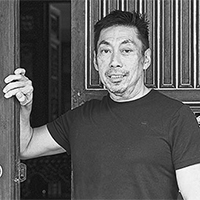
Investment banker turned hotelier, Chris opened the award-winning Galle Fort Hotel in Sri Lanka with his then partner Karl Steinberg. Returning home to Penang for family reasons, he now owns four boutique heritage properties under the George Town Heritage and Hotels (GTHH) brand.
See
For some ‘air’, head up to Penang Hill by foot or funicular and experience what made this the setting for the famous TV series ‘Indian Summers’.
Eat
Street food is an absolute must, but you must try the heritage restaurants too – Toh Yuen, Sin Kheng Aun and Goh Hup Kee are all institutions that have been doing sterling business in Penang for over 60 years.
Snap
To get some amazing pictures, visit a wet market to see what ingredients the locals buy for their meals. My favourite is Chowrasta in the day and Cecil Street in the evening.


